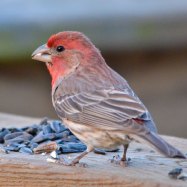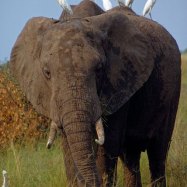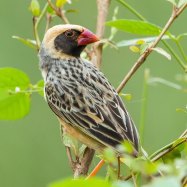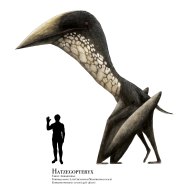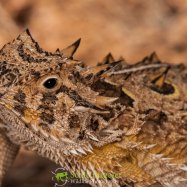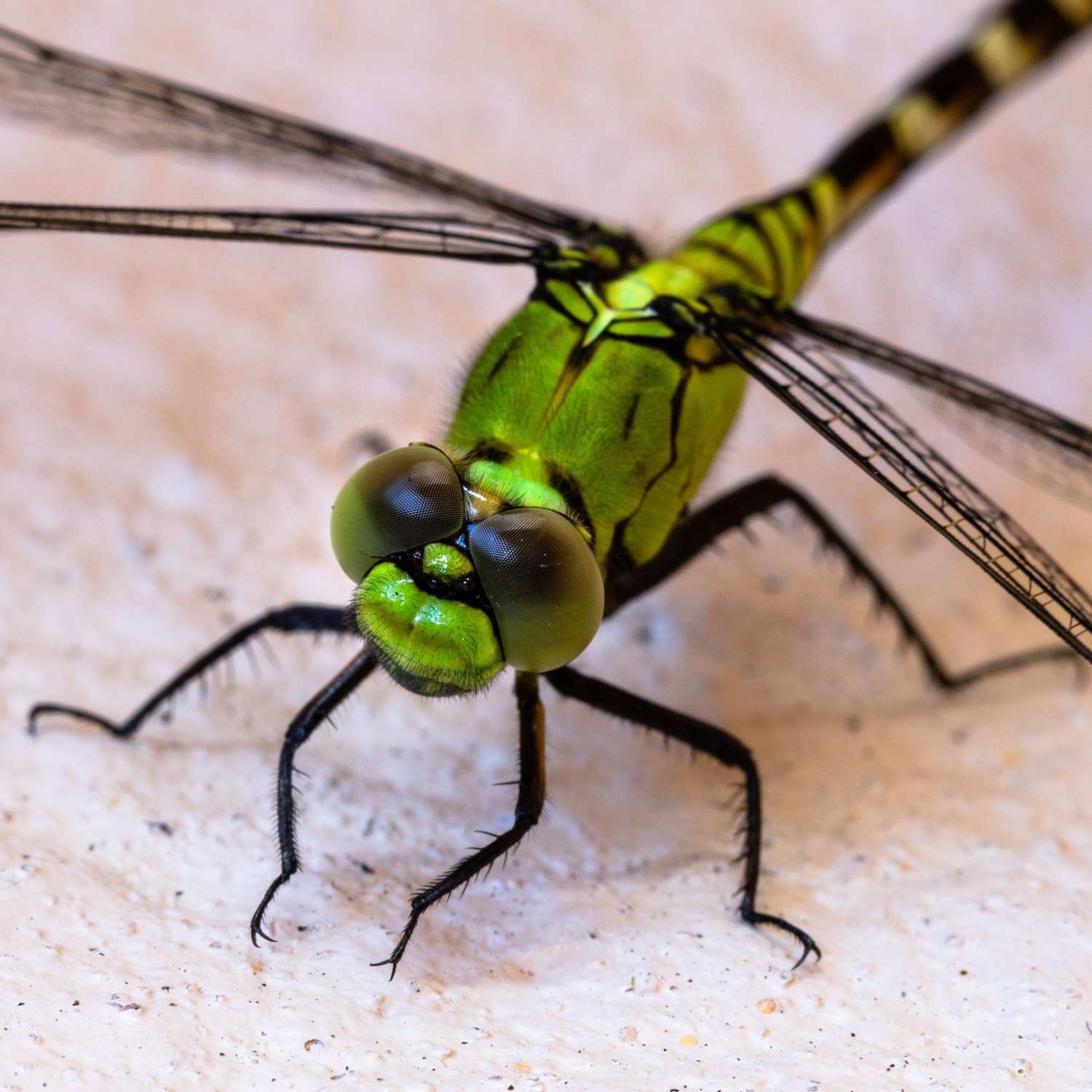
Dragonfly
Varies (from about 1 inch to 6 inches)
Dragonflies are fascinating creatures with their long, slender body and two pairs of wings. They come in various sizes, ranging from 1 inch to 6 inches. Found in different locations, dragonflies belong to different families. These beautiful insects are beneficial to the environment as they eat mosquitoes, making them a natural pest control. #Dragonfly #Insects #Nature
Animal Details Summary:
Common Name: Dragonfly
Kingdom: Animalia
Habitat: Aquatic habitats such as lakes, ponds, rivers, and wetlands
The Amazing Dragonfly: A Master of Flight and Predation
Imagine a creature that can fly in all directions – upwards, downwards, forwards, and even backward. A creature that can also hover in mid-air, as if defying gravity. A creature that has been around for more than 300 million years, outlasting even dinosaurs. Such a creature exists, and it is none other than the dragonfly Dragonfly.Scientifically known as Odonata, but more commonly called dragonflies, these creatures belong to the animal kingdom, specifically under the phylum Arthropoda. They are part of the class Insecta, which makes them insects and not, as some may believe, a type of fly. These magnificent creatures are part of the order Odonata, which consists of two suborders – Zygoptera (damselflies) and Anisoptera (dragonflies).
Found in various parts of the world, dragonflies are known for their impressive flying abilities and their carnivorous diet. In this article, we will explore the fascinating world of dragonflies, from their habitat to their physical characteristics and behaviors.
Dragonfly Habitat and Geographic Distribution
Dragonflies are found in almost every continent, with the exception of Antarctica. They thrive in a variety of habitats, but they are most commonly found near freshwater sources such as lakes, rivers, and ponds. These bodies of water not only provide a suitable environment for their larvae to develop but also serve as hunting grounds for adult dragonflies.Their geographic distribution varies depending on the species, with some found in specific regions, while others can be found worldwide Duck. For example, the aptly named Globe Skimmer dragonfly has a range that spans from southern Europe to India, while the Scarlet Darter can be found in parts of North America, Europe, and Asia.
Physical Characteristics of Dragonflies
Dragonflies have a distinct and easily recognizable appearance, with their long and slender bodies, two pairs of wings, and large compound eyes. They have six long and spiny legs that they use to grasp onto their prey, and their bodies can range from about 1 inch to 6 inches in length.One of the most fascinating physical features of dragonflies is their wings. They have two pairs of wings, with the front pair being shorter and narrower than the hind pair. These wings are covered in intricate patterns and can move independently, allowing dragonflies to fly in all directions with ease.
Additionally, dragonflies are known for their stunning and vibrant colors. Depending on the species, they can come in a wide range of colors, from metallic shades of blue, red, and green to more subdued shades of brown and black. Their vibrant colors serve as a defense mechanism, warning potential predators of their toxicity.
Dragonfly Diet and Feeding Habits
Despite their peaceful and mesmerizing flight, dragonflies are fierce predators. They have sharp mandibles that they use to catch and devour their prey, making them carnivorous insects. Their diet consists mainly of other insects, such as flies, mosquitoes, and butterflies.Dragonflies have excellent hunting skills, thanks to their large compound eyes, which allow them to have a 360-degree view of their surroundings. They can also see in both the ultraviolet and polarized light spectra, giving them an advantage in tracking their prey and avoiding potential predators.
One of the most impressive feeding habits of dragonflies is their ability to catch prey while flying. They can catch their victims mid-air by hovering or even flying backward, thanks to their highly maneuverable wings. With their strong and swift flying abilities, dragonflies can catch their prey with utmost precision, making them efficient and successful hunters.
The Life Cycle of a Dragonfly
The life cycle of a dragonfly begins in water; once mating has occurred, the female dragonfly lays her eggs either on the surface or in plants near the water. Once the eggs hatch, the larvae, also known as nymphs, will spend most of their lives underwater, growing and molting until they are ready to emerge as adult dragonflies.The duration of a dragonfly's nymph stage can vary from a few months to as long as five years, depending on the species. During this stage, the nymphs are also carnivorous, feeding on smaller insects and even small fish.
When the nymph is ready to become an adult, it crawls out of the water onto land, where its exoskeleton splits open, freeing the dragonfly. The newly emerged dragonfly is soft and vulnerable but quickly hardens and gains its iconic features, such as wings, within a few hours.
The adult dragonfly will spend the rest of its life on land, flying and hunting for prey. They usually live for about a couple of months, with some species living up to a year.
The Importance of Dragonflies in the Ecosystem
Aside from their impressive flying abilities and stunning appearance, dragonflies play an essential role in the ecosystem as both predators and prey. As predators, they help control the population of insects, particularly those that are considered pests. This helps maintain the balance in the ecosystem and prevents overpopulation of certain insect species.Dragonflies themselves are also a food source for other animals, such as birds, fish, and amphibians. Their larvae, in particular, are a crucial food source for aquatic animals, helping to maintain the delicate balance of underwater ecosystems.
Furthermore, dragonflies indirectly contribute to the pollination of plants. While they do not intentionally pollinate like bees and butterflies, they carry pollen on their legs and bodies as they move from one flower to another, thus helping with cross-pollination.
Conservation of Dragonflies
Despite their abundance and widespread distribution, dragonflies are still threatened by human activities such as pollution, habitat destruction, and climate change. Pollution in aquatic habitats can affect the water quality and hinder the development of dragonfly larvae, while deforestation and the draining of wetlands deprive them of their natural habitats.Therefore, it is important to protect and conserve these fascinating creatures, not only for their intrinsic value but also for their role in maintaining the balance in our ecosystems. Simple actions such as avoiding the use of harmful chemicals near bodies of water, preserving natural habitats, and reducing our carbon footprint can go a long way in protecting dragonflies and other species that depend on these habitats.
In Conclusion
Dragonflies are truly amazing creatures, with their incredible flying abilities, colorful appearance, and essential role in the ecosystem. They have been around for millions of years, and their survival and adaptability serve as a testament to their resilience. So the next time you see a dragonfly gracefully hovering in mid-air or swooping down to catch its prey, take a moment to appreciate these beautiful, ancient creatures.

Dragonfly
Animal Details Dragonfly - Scientific Name: Odonata
- Category: Animals D
- Scientific Name: Odonata
- Common Name: Dragonfly
- Kingdom: Animalia
- Phylum: Arthropoda
- Class: Insecta
- Order: Odonata
- Family: Varies
- Habitat: Aquatic habitats such as lakes, ponds, rivers, and wetlands
- Feeding Method: Carnivorous
- Geographical Distribution: Worldwide
- Country of Origin: Varies
- Location: Varies
- Animal Coloration: Varies
- Body Shape: Long and slender body with two pairs of wings
- Length: Varies (from about 1 inch to 6 inches)
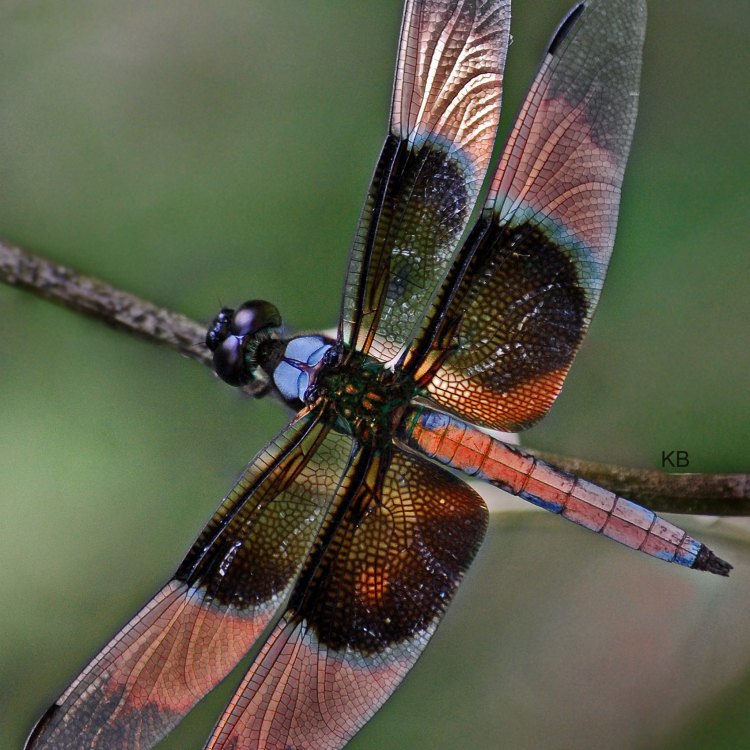
Dragonfly
- Adult Size: Varies (from about 1 inch to 6 inches)
- Average Lifespan: Up to several months
- Reproduction: Sexual
- Reproductive Behavior: Mating in flight
- Sound or Call: Some species produce wingbeats that create a humming or buzzing sound
- Migration Pattern: Varies
- Social Groups: Varies
- Behavior: Active during the day (diurnal)
- Threats: Habitat loss, water pollution, climate change
- Conservation Status: Varies
- Impact on Ecosystem: Important predators of insects
- Human Use: Some dragonflies are used in biological control of pests
- Distinctive Features: Large compound eyes, four transparent wings, long abdomen
- Interesting Facts: Dragonflies are excellent fliers and can fly in all directions, including backward
- Predator: Birds, fish, frogs, spiders
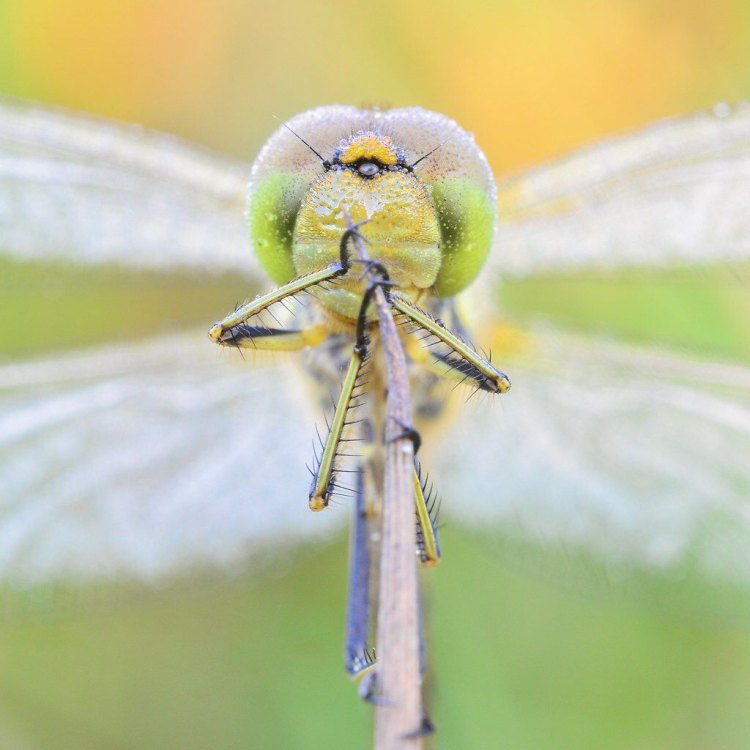
Odonata
Daring Dragonflies: Uncovering the Mysteries of this Fascinating Insect
When you think of insects, what comes to mind? Creepy crawlies that buzz and bite, perhaps. But what if I told you that there is an insect that can fly in all directions including backward, has large compound eyes, and can even be used as a biological control for pests? Meet the fascinating and often misunderstood creature, the Dragonfly.Dragonflies, from the scientific order Odonata, have been around for over 300 million years, making them one of the oldest insect species on the planet. With their unique physical features and impressive abilities, it's no wonder they have captured the interest of scientists and nature enthusiasts alike PeaceOfAnimals.Com. In this article, we will take a deep dive into the world of dragonflies, from their life cycle to their impact on the ecosystem, and uncover the captivating aspects of this ancient insect.
A Nostalgic Reminder of Childhood Days
For many of us, the mention of dragonflies takes us back to our childhood days, running around in a meadow, trying to catch these colorful insects in our hands. With their bright hues of blue, green, and red, dragonflies have always been a delight to behold. But how much do we really know about these creatures of the sky?
Dragonflies are found all over the world, except in the polar regions. There are over 5,000 known species of dragonflies, and they can range in size from as small as 1 inch to a whopping 6 inches. Their unique physical features, such as their large compound eyes, four transparent wings, and long abdomens, set them apart from other insects. These features not only make them visually appealing but also serve important functions in their survival.
A Life Cycle Like No Other
Dragonflies have a fascinating life cycle that can vary slightly from species to species. They have three stages of development: egg, nymph, and adult Dire Wolf. The adult female dragonfly lays her eggs on or near water, as it is a vital element to their survival. Upon hatching, the nymphs, also known as naiads, spend the majority of their lives in the water, feeding on small aquatic organisms such as mosquito larvae and small fish.
Nymphs are voracious predators and use their extendable jaws to catch their prey. They also possess gills that allow them to breathe underwater. As they grow, they molt around 12-14 times before reaching their final stage of development. This process can take anywhere from a few months to several years, depending on the species and environmental conditions. Once they are fully developed, they climb out of the water and molt one last time, revealing their adult form.
Mating in Flight: A Spectacular Display
One of the most unique and awe-inspiring behaviors of dragonflies is their mating ritual, which takes place in flight. Once the adult male and female dragonflies have emerged, they will find a suitable place to mate. The male will grasp the female behind her head using his claspers while she bends her abdomen towards the male's reproductive organ to fertilize her eggs.
But what makes this process truly remarkable is the aerial acrobatics that go along with it. The male and female fly in tandem, forming a heart shape as they dip and soar through the sky. This spectacular display is a way for the male to impress the female and demonstrate his strength and agility. Once the mating is complete, the female will lay her fertilized eggs in the water, starting the cycle all over again.
The Buzzing Sound of Dragonfly Wings
Have you ever been near a pond or stream and heard a faint hum or buzz in the air? It's possible that you were in the presence of a dragonfly. Some species of dragonflies, such as the aptly named "broad-winged damselfly," produce a sound or call when they flap their wings. This sound is caused by the rapid movement of their wings, which can flap up to 30 times per second.
The buzzing or humming sound is used by dragonflies for communication and to attract mates. It is also a way to mark their territory and warn off potential predators. So, the next time you hear that familiar sound, take a moment to appreciate the beauty and complexity of these tiny creatures.
Migratory Patterns and Social Groups
Dragonflies have no specific migratory pattern, and their movement depends on the species and the availability of suitable habitats. Some species stay in the same area throughout their lives, while others may fly long distances in search of food and favorable breeding locations. In some cases, dragonflies may even be found in extremely remote areas, thousands of miles away from their original habitat.
Unlike social insects like bees or ants, dragonflies do not have a well-defined social structure. However, they have been known to gather in groups during migration and huddle together for warmth in colder climates. These social interactions may also occur in the form of territorial displays while searching for mates or during feeding.
A Diurnal Creature: Active During the Day
Dragonflies are diurnal creatures, meaning they are active during the day. They are most commonly seen on sunny, warm days, as they prefer to bask in the sun to regulate their body temperature. This preference for warm weather is one reason why dragonflies are often associated with summertime and are seen as a symbol of summer.
Their diurnal nature also means that they have excellent vision, which is crucial for hunting and navigating their surroundings. Their large compound eyes allow them to see in nearly all directions, making them acutely aware of potential threats.
A Threatened Existence
Despite their long history and widespread distribution, dragonflies face many threats in the modern world. The biggest threat being habitat loss, caused by human activities such as urbanization and deforestation. As their habitat disappears, dragonflies lose their breeding sites and food sources, putting their populations at risk.
Water pollution is another significant threat to dragonflies. As aquatic creatures, they are especially vulnerable to the contamination of their water sources. Pesticides, sewage, and industrial waste can harm or even kill these fragile insects, upsetting the delicate balance of their ecosystem.
Climate change is also having an impact on dragonflies, as it affects their mating and breeding patterns. Changes in temperature and weather patterns can disrupt their annual life cycle, leaving them vulnerable to predation and making it difficult for them to survive and reproduce.
The Importance of Dragonflies in the Ecosystem
As with all living creatures, dragonflies play an essential role in their ecosystem. They are voracious predators of insects, including pests such as mosquitoes and flies. In some areas, dragonflies are considered beneficial insects, as their presence can help control pests that can damage crops and spread diseases.
Additionally, larvae of dragonflies are also important for maintaining a healthy aquatic ecosystem. They consume algae, keeping the water clean and preventing the overgrowth of harmful microorganisms. They also serve as a food source for larger aquatic animals, such as fish and frogs.
Human Use of Dragonflies
While humans pose several threats to dragonflies, we also use them for our benefit. Some species of dragonflies are used as biological control agents, helping to control pest populations in agriculture and horticulture. This natural method of pest management reduces the need for harmful chemical pesticides, making it an environmentally friendly option.
Dragonflies also hold cultural and symbolic significance in many societies worldwide. In Japan, dragonflies are seen as symbols of strength, courage, and victory, while in Native American cultures, they represent transformation and change. In some parts of Africa, dragonflies are thought to bring luck and prosperity, and in Chinese culture, they are considered harbingers of good luck and harmony.
Unraveling the Mysteries of Dragonflies
Despite their long existence on Earth, there is still much to learn about dragonflies. Their unique physical features, mating rituals, and behaviors continue to intrigue researchers and enthusiasts. As we continue to explore and uncover the mysteries of these fascinating creatures, it is essential to recognize and preserve their habitats to ensure their survival.
Dragonflies remind us of the beauty and wonder of the natural world and the intricate interconnectedness of all living beings. So, the next time you see a dragonfly buzzing around a pond or stream, take a moment to appreciate this ancient and majestic insect and the vital role it plays in the ecosystem.
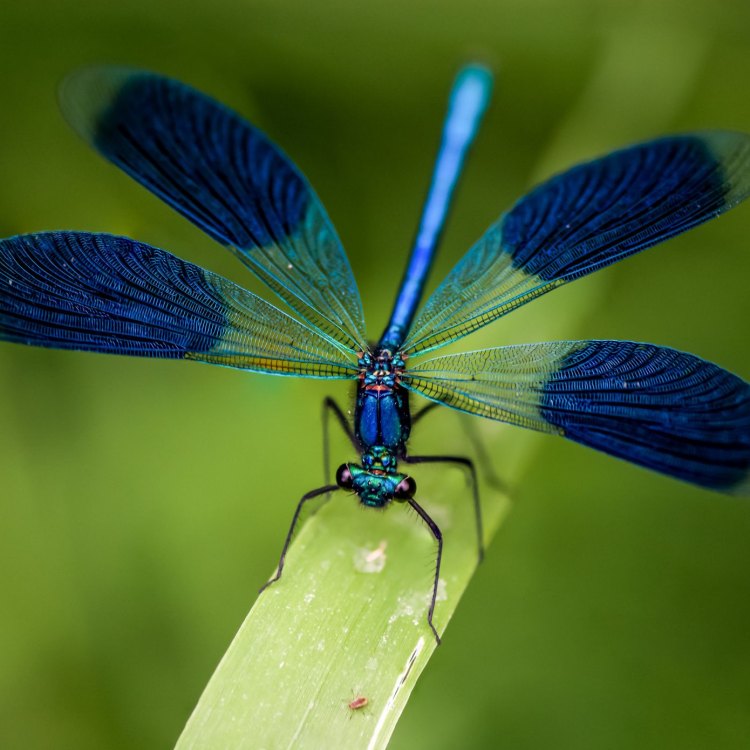
The Amazing Dragonfly: A Master of Flight and Predation
Disclaimer: The content provided is for informational purposes only. We cannot guarantee the accuracy of the information on this page 100%. All information provided here may change without prior notice.

